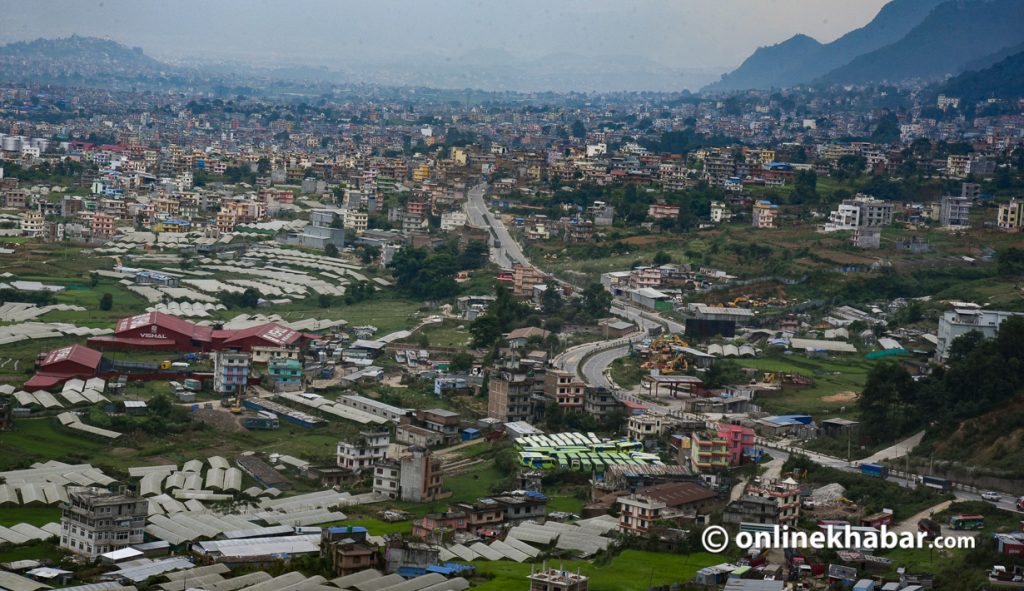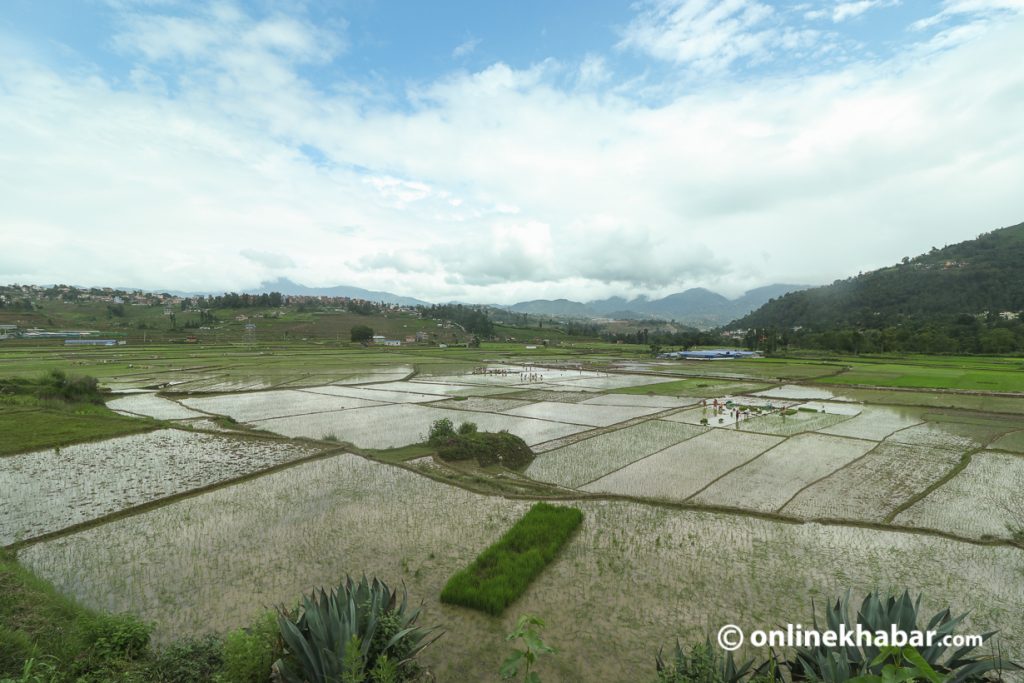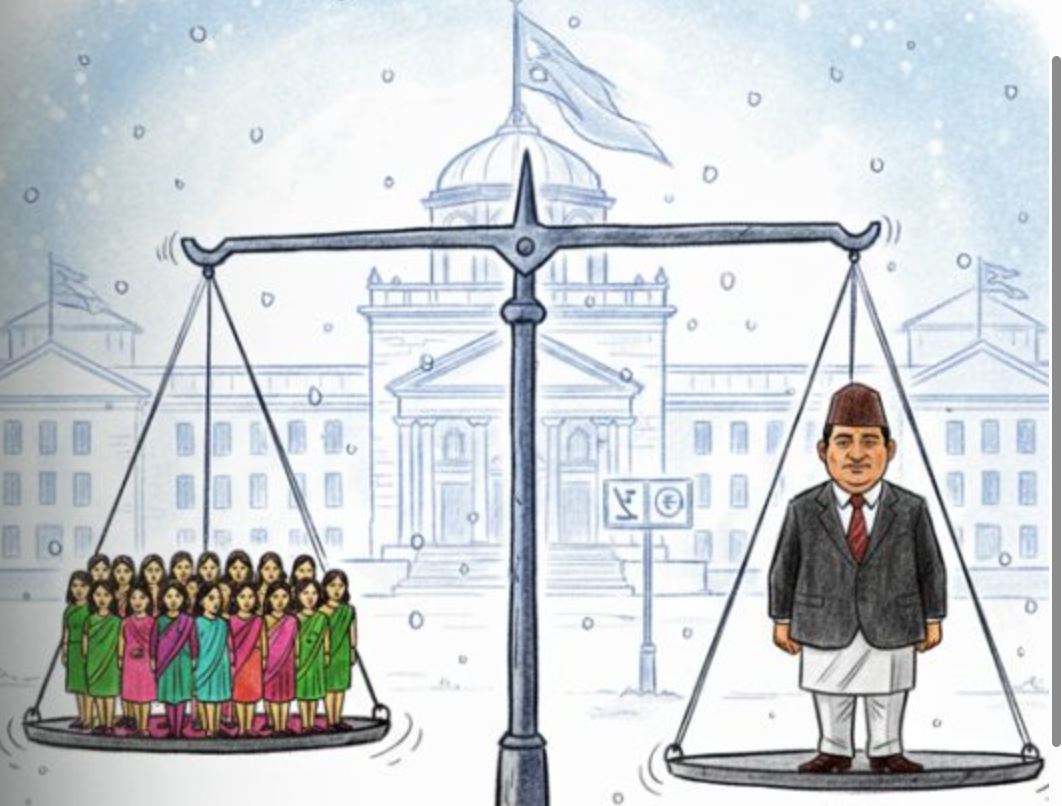
Earlier in the year, a piece of land in Durbarmarg in Kathmandu was sold for Rs 90 million marking it as one of the highest real estate transactions globally. This trend of high-value land transactions is not confined to Kathmandu alone but extends across the entire country.
It is common knowledge that the price of real estate in Nepal is at an all-time high, particularly in Kathmandu. The reason was simple. Initially, people wanted to move to Kathmandu as it was relatively safe during the Maoist insurgency in the late 1990s and early 2000s.
Initially, there was a trend of people migrating from rural to urban areas. However, today, the escalating prices have reached such heights that finding an easy solution has become increasingly challenging.
An average Nepali worker would have to save their entire salary for 10 or more years just to afford land in the capital city. This prompts the need to contemplate solutions for questions such as why the prices are so high, who bears responsibility for this trend, how it affects the economy, and what measures can be taken to address these challenges.
Reasons for skyrocketed property prices

One of the major reasons why property prices have skyrocketed is because of the unregulated lending practices of the banking sector. Loans worth Rs 516 billion have been distributed into the property market, including the loans that were supposed to be given to the agricultural sector.
Banks ideally should have directed loans towards productive sectors, fostering job creation and supporting the economy. Unfortunately, they opted for more profitable yet lower-risk investments in real estate, contributing to the conversion of agricultural land in Kathmandu, Chitwan, and other urban areas.
The land prices in the outskirts of Kathmandu, such as Banepa, Dhulikhel, and Dhading, are absurdly comparable to the land prices in London, highlighting an extraordinary and disproportionate trend.
The impact of a growing population on real estate is so significant that it merits a separate discussion. According to the Nepal census, the annual population growth rate in Kathmandu is recorded at 6.67 per cent.
Every citizen dreams of owning a home or a piece of land in their life. Due to this, the demand for land and its limited supply clash with the ever-growing population. Unclear government regulations have led to the informal control of land transactions by brokers, whose excessively high commission rates are not economically sustainable. This has further fueled the upward trajectory of real estate prices.
About a decade ago, a rumour spread saying that there was a plan to shift the capital city from Kathmandu to Chitwan. After that, many rushed to buy the land plots in Chitwan. This rumour might have been spread by the real estate mafias from which they earned quite a lot of profit.
A significant factor driving increased investment in real estate in Nepal is the low tax imposed on land transactions. According to the law, if someone sells land within five years of acquisition, they are only required to pay five per cent of the profit as capital gains tax to the government.
This is considerably lower than the 36 per cent income tax individuals must pay on their earnings. Consequently, many find real estate investment more attractive, given the comparatively reduced tax burden, as opposed to earning income through other means.
Condition of agricultural land in Nepal

Ever since the kids are sent to school, they are taught that Nepal is an agricultural country. What is laughable about this is that despite having agricultural land, Nepal imports crops from other countries.
This happens because individuals opt to place their agro-based land on the real estate market, driven by the prospect of higher profits. What was once fertile land meant for crop cultivation transforms into plots supporting towering buildings. This transition not only hampers the potential productivity of the land, impacting the overall economy but also results in properties with exorbitant prices, rendering them unaffordable for the general people.
On the contrary, the Nepali real estate sector may be on the cusp of rapid development in the coming years. Anticipated outcomes include a surge in housing prices and a growing preference for smaller commercial houses and apartments. Such developments could be deemed as inevitable consequences of the overall progress and growth in the sector.
Real estate has evolved into an investment instrument, creating a scenario where housing has become increasingly unaffordable for many individuals. While housing quarters could potentially address the accommodation needs of various employees, such a solution is currently absent in our country.
The pressure to own a house compels both private and public employees to seek illicit means of income, as the dream of acquiring enough funds to buy land and build a house remains a distant and challenging goal.
Their salary is barely enough to pay the rent of a flat. Focusing only on profits has also led to speculative practices, contributing to market volatility. Ideally, real estate should serve the fundamental need for shelter and business spaces rather than primarily being a means for financial speculation.
To tackle rising property prices in Nepal, we can consider different strategies. For example, if someone owns multiple properties and the government imposes higher taxes on the ones not used for living, it could discourage buying more properties for investment.
Also, controlling how banks use one property as collateral to provide a loan for another property could also help prevent excessive borrowing and speculation. Additionally, if certain lands are restricted to specific purposes, like farming, it could help keep their prices more stable and prevent them from being rapidly converted for other uses.
There is also a need for government-backed housing projects. This way more affordable options will be floated in the market for common people. This will discourage people from falling into the trap of these land mafias.




















